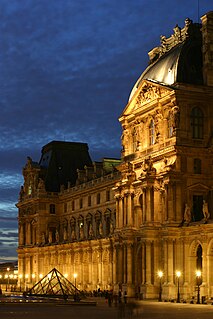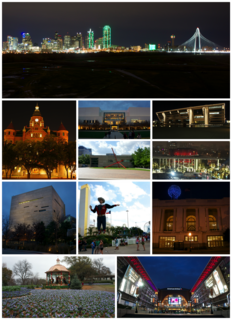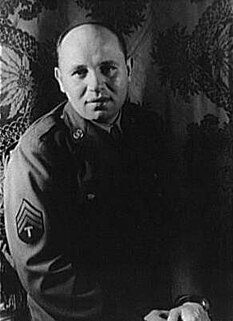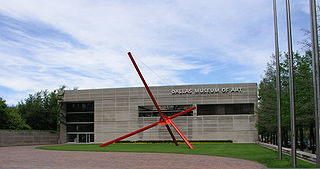
The Dallas Museum of Art (DMA) is an art museum located in the Arts District of downtown Dallas, Texas, along Woodall Rodgers Freeway between St. Paul and Harwood. In 1984, the museum moved from its previous location in Fair Park to the Arts District. The new building was designed by Edward Larrabee Barnes, the 2007 winner of the American Institute of Architects Gold Medal.

The Wright Amendment of 1979 was a United States federal law that governed traffic at Dallas Love Field, an airport in Dallas, Texas, to protect Dallas/Fort Worth International Airport (DFW) from competition. The amendment prohibited carriers from operating full-size airliners between Love Field and destinations beyond Texas and its four neighboring states. Further amendments in 1997 and 2005 added new states and relaxed aircraft rules for long-range service. The law was partially repealed in 2006 and then fully repealed in 2014.
Legend Airlines was an airline that had its headquarters on the grounds of Dallas Love Field. Legend operated nonstop flights from Love Field, Dallas, Texas, USA to Washington D.C., Las Vegas, Los Angeles and New York City. The airline was the first carrier to fly from Love Field to destinations beyond the Wright Amendment five-state region after all major air carriers pulled out of Love Field following the opening of Dallas/Fort Worth International Airport in 1974.

The Museum of Fine Arts, Houston (MFAH), located in the Houston Museum District, Houston, is one of the largest museums in the United States. The permanent collection of the museum spans more than 6,000 years of history with approximately 64,000 works from six continents.

Dallas Contemporary, founded in 1978, is a contemporary art museum located in the Design District of Dallas, Texas.

The Women's Museum: An Institute for the Future was a museum located inside Fair Park in Dallas, Texas (USA), covering the subject of American women's history. The Women's Museum's 70,000-square-foot (6,500 m2) building provided a home for programs and exhibits where people could honor the past and explore the contributions of women throughout history.
Sid Williams Richardson was a Texas businessman and philanthropist known for his association with the city of Fort Worth.
KAWA is a contemporary Christian music (CCM) formatted radio station located in Dallas, Texas. It is a WAY-FM Network owned and operated station through Way Media, Inc. and broadcasts on 89.7 FM. As a non-profit under previous ownership of Research Educational Foundation, Inc., it annually hosted two fund-raising drives to remain on the air. It broadcasts at 14,000 Watts from a tower in Sanger, Texas.
The National Multicultural Western Heritage Museum, formerly the National Cowboys of Color Museum and Hall of Fame, is a museum and hall of fame in Fort Worth, Texas. NMWHM takes a look at the people and activities that built the unique culture of the American West, in particular the contributions of Hispanic Americans, Native Americans, European Americans, and African Americans. The work of artists who documented the people and events of the time through journals, photographs and other historical items are part of this new collection. These long overlooked materials tell, perhaps for the first time, the complete story. The American West of today still operates on many of the principles and cultural relationships begun so long ago.

James Surls is an American modernist artist. His father was a carpenter, and his mother was an elder of the Cherokee Nation. Surls earned a BS from Sam Houston State University and an MFA from the Cranbrook Academy of Art. In 1998, he moved from Splendora, Texas to Carbondale, Colorado.
Eagle Ford is a neighborhood in West Dallas, Texas, United States.

The American Airlines C.R. Smith Museum (CRSM) is located on the campus of the American Airlines Flight Academy, which is situated at the southern end of DFW International Airport, in the city limits of Fort Worth, Texas, and in close proximity to the world headquarters of American Airlines. The location is at the midpoint between Downtown Dallas and Downtown Fort Worth near the intersection of Highways 183 and 360. The CRSM has an exhibit gallery of approximately 25,000 square feet (2,300 m2) and a 10,000-square-foot (930 m2) hangar that houses the Flagship Knoxville, a fully restored DC-3 aircraft. The museum also includes a 1,500-square-foot (140 m2) gift shop and a large-format theatre similar to IMAX.

James W. Jack Boynton was an American artist.
The Potter's House is a megachurch in Dallas, Texas, United States, founded by T. D. Jakes. Outreach magazine ranked it the 10th largest in the US as of 2008 based on a weekly attendance of 17,000 and a capacity of about 8,000.

Plaza of the Americas is a major commercial complex in the City Center District of downtown Dallas, Texas (USA). It is adjacent to DART's Pearl Station and connected to the Dallas Pedestrian Network. The complex features several amenities connected by an enclosed 120,000 sq ft (11,000 m2). skylighted atrium which rises 13 stories above the lowest level:
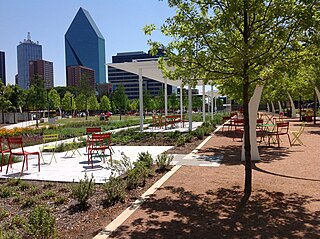
Klyde Warren Park is a 5.2-acre (2.1 ha) public park in Downtown Dallas, Texas. The park is over the Woodall Rodgers Freeway, and opened in 2012. It is named for Klyde Warren, the young son of billionaire Kelcy Warren.
The Lenora Rolla Heritage Center Museum is a museum in Fort Worth, Texas that focuses on the history of African Americans in Tarrant County and throughout Texas. It is named for Lenora Rolla who initially raised money to purchase the building and start the museum in 1979. It is operated in the historic Boone House and open by appointment with the Tarrant County Black Historical and Genealogical Society.
Sedrick Ervin Huckaby (1975) is an American artist who is known for his use of thick, impasto paint to create murals that evoke traditional quilts and to produce large portraits that represent his personal history through images of family members and neighbors. Huckaby has worked with images from quilts for many years, moving them from background components of portraits into the subject of his work. He was interviewed about his quilt-influenced abstract work in a podcast for Painters Table. His work is on display at the San Francisco Museum of Modern Art, the Whitney Museum of American Art, the Museum of Fine arts in Boston, the Minneapolis Institute of Art, The Art Institute of Chicago, and the Nasher Museum of Art at Duke University.
Carita Letitia Huckaby is an American photographer who creates multimedia artwork combining photography and textiles to depict both family narratives and African American history.
Yavneh Academy of Dallas is a coeducational, college preparatory Jewish private high school in Dallas, Texas. It is guided by the tenets of Modern Orthodox Judaism. With a student body of more than 100 students in grades 9-12 for the 2018-19 academic year, Yavneh has dual curriculum of General and Judaic Studies.



